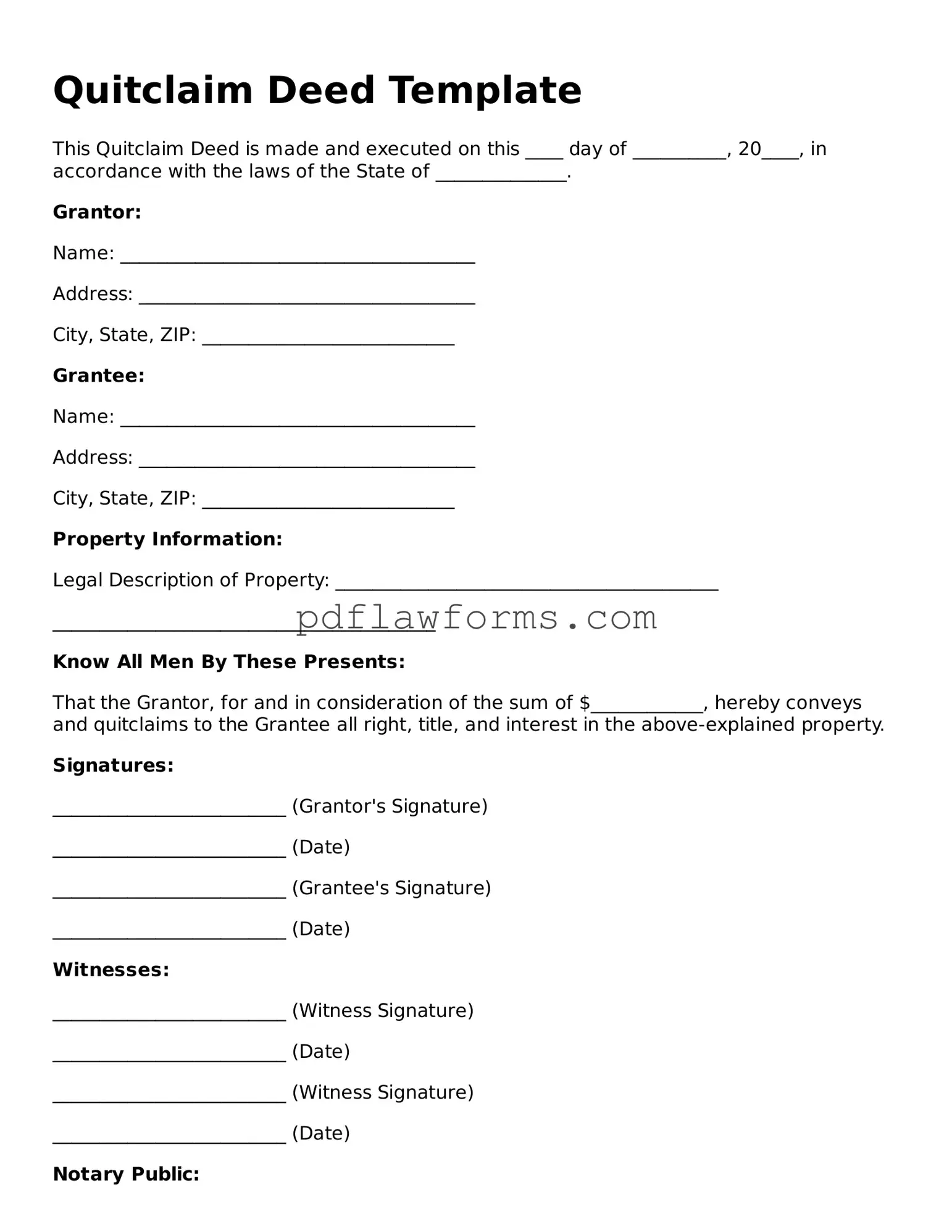The Quitclaim Deed form serves as a crucial tool in real estate transactions, allowing property owners to transfer their interest in a property to another party without making any guarantees about the title's validity. This form is often used among family members, in divorce settlements, or during estate settlements, where the transfer of ownership may not require extensive title searches or warranties. Unlike warranty deeds, which provide assurances regarding the title's legitimacy, a quitclaim deed offers no such protections, making it essential for both parties to understand the implications of this type of transfer. The form typically includes essential details such as the names of the grantor and grantee, a description of the property, and the date of the transaction. Additionally, while the quitclaim deed is relatively simple to complete, it is advisable to consult with a legal professional to ensure that all local laws and regulations are followed, safeguarding the interests of both parties involved in the transfer.
